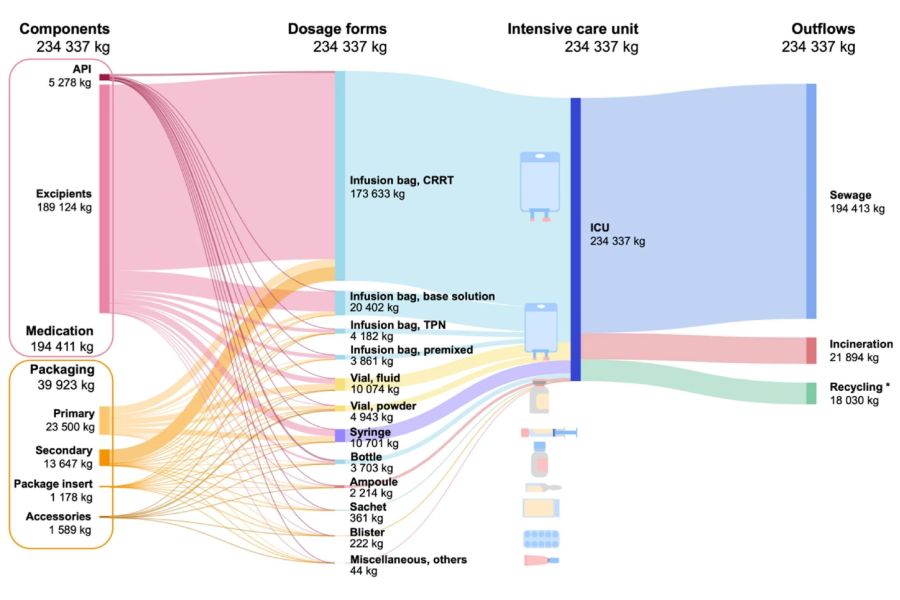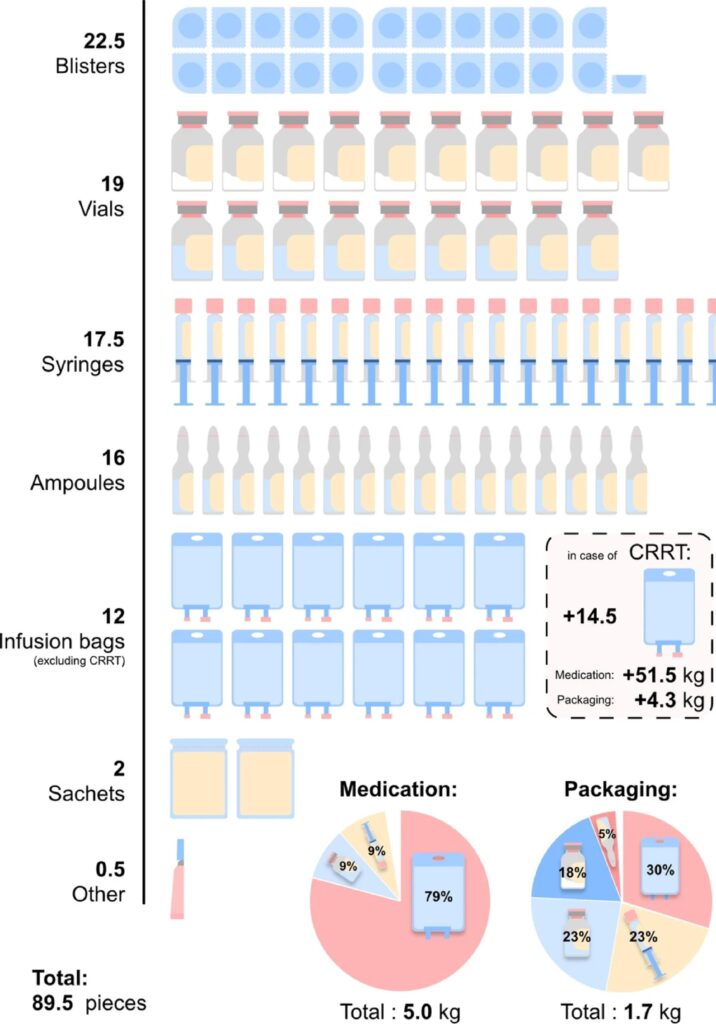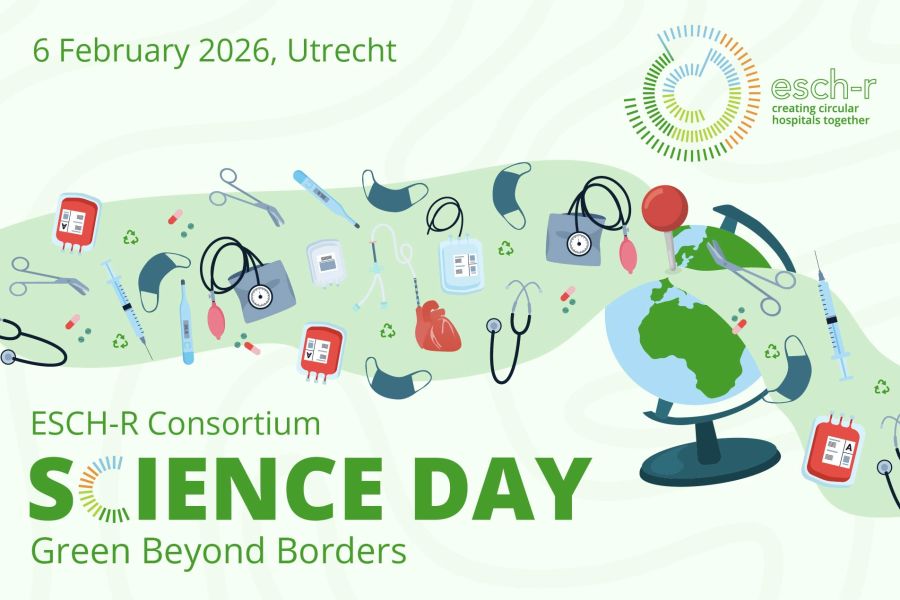Circular material flow of medication in the intensive care unit

Figure 1.
MFA of the ICU of Erasmus MC University Medical Center in 2023. Functional groups are shown on the left. The flow continues towards medication dosage forms and leaves the ICU with the outflow on the right side. *In 2023, only packaging materials from CRRT related infusion bags were recycled, resulting in 45.2% of packaging mass being recycled. Other types of recycling (such as paper recycling) were not quantified and are therefore not included. Individual weights are rounded to the nearest kilogram

Published in: Critical Care Journal, Volume 29
Authors: Jasper Klasen, Silke Rijcks, Diederik Gommers, Jan Carel Diehl & Nicole Hunfeld
Abstract
Background
Intensive care units (ICUs) contribute significantly to healthcare’s environmental footprint, with medications playing a major role. This study performed a comprehensive Material Flow Analysis (MFA) of medications in a large academic ICU to quantify material flows and identify opportunities for sustainability.
Methods
A single-center MFA was conducted at a 50-bed ICU, analyzing all medications delivered in 2023. Medication and packaging components were weighed and categorized by active pharmaceutical ingredients (APIs), excipients, and packaging type. Total annual mass as well as daily medication and packaging waste per patient were calculated.
Results
The annual medication inflow totaled 234,337 kg, including 194,411 kg of medication content (5287 kg APIs, 189,124 kg excipients) and 39,923 kg of packaging. APIs constituted only 2.3% of the total medication mass. On average, patients received 89.5 medication units daily, totaling 5.0 kg of medication and generating 1.7 kg of packaging waste. Waste outflow comprised 194,413 kg to the sewage system, 21,894 kg for incineration, and 18,030 kg recycled, consisting primarily of continuous renal replacement therapy (CRRT) bags.

Figure 3
Overview of mass of medications and their associated packaging waste per ICU patient per day
Conclusions
This MFA highlights significant opportunities to enhance ICU medication sustainability by targeting CRRT-related waste, optimizing fluid formulations to reduce excipient use, and minimizing packaging. These findings support the development of targeted interventions to reduce the environmental footprint of critical care.
Read the whole publication here.


